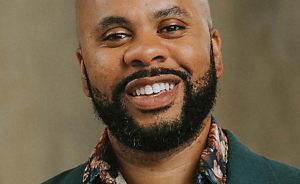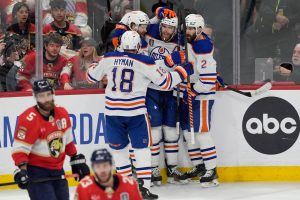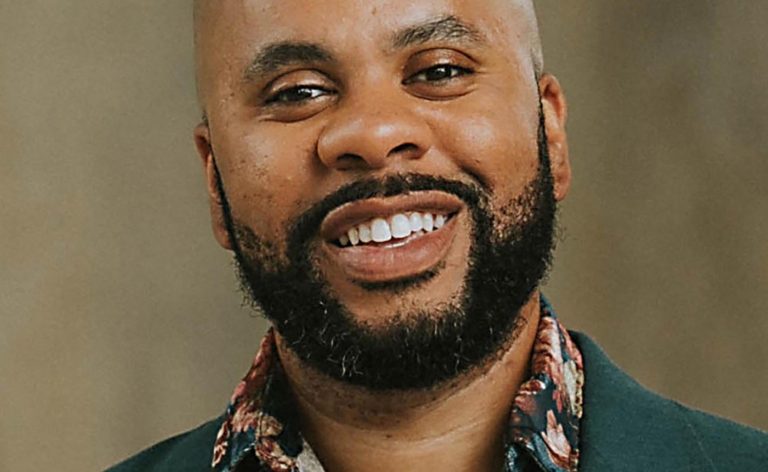CHICAGO — Logan Webb was all by himself, alone on the diamond, when the classic photo of Willie Mays, posing in a home cream Giants uniform with his bat cocked in his hands, appeared on the scoreboards beyond the ivy-covered walls of Wrigley Field and an announcement came over the loudspeakers.
Ladies and gentlemen, it is with great sadness that we announce that San Francisco Giants legend and Hall of Famer Willie Mays passed away peacefully this afternoon at the age of 93. Please join us in a moment of silence as we remember Willie Mays.
“That was the first I heard of it,” Webb said, recounting the moment he learned of the Tuesday afternoon passing of, in his words, “kind of the Giant. Like, he is the guy.”
Taking the mound to start the sixth inning, Webb removed his cap and stopped short of the rubber. He paused, gazing toward the outfield. Reality hit when he shifted his eyesight and saw the pitch clock counting down, a reminder that he still had pitches to throw and outs to record.
“I kind of looked at the umpire and I was like, ‘I think you need to stop the clock,’” Webb said. “I had to take a moment to think about it and be prideful for the jersey I was wearing, the hat I was wearing and know that Willie did the same.”
The Giants lost to the Cubs, 5-2, but the game played second fiddle to the news that many players and coaches learned of as it transpired.
“I found out when they announced it on the jumbotron,” said outfielder Mike Yastrzemski. “I didn’t even really know what happened. … It’s obviously really sad news. But Willie lived a great life and I was fortunate enough to meet him and have some great conversations with him.
“It’s a tough pill to swallow, but it’s a life to be celebrated, for sure.”
A 24-time All-Star, 12-time Gold Glove winner, two-time MVP and a first-ballot Hall of Famer, the credentials on Mays’ plaque in Cooperstown are unrivaled.
The depth and breadth of his impact could be measured by the outpouring of grief from all eras of baseball folk within the visitors’ clubhouse after the game. Manager Bob Melvin and pitching coach Bryan Price spoke of watching him in awe as children growing up in the Bay Area. Active players, such as Webb and Yastrzemski, were still two decades from being born when Mays retired in 1973 but glowed speaking of their interactions when he would come around the park.
“To be able to transcend and bring the club from New York to San Francisco and be able to get people so excited about absorbing the Giants into the San Francisco Bay Area community was huge,” said Price, who was born in San Francisco in 1962 and raised in Mill Valley. “There was no better ambassador than Willie Mays.”
Price remembers the first game he attended, against the Pirates at Candlestick Park, and Mays was “one of the reasons to go to the ballpark.
“There’s lots of guys (in that era) that were really influential Giants, but none bigger than Willie Mays. … It was on a whole other level of play and ambassadorship for the game and love and spirit of baseball. Nobody connects the Bay Area to baseball more than Willie Mays.”
Melvin, born in Redwood City in 1961, said he “loved baseball because of Willie Mays.”
It didn’t take eye-witness accounts of Mays to appreciate his generational ability, though Yastrzemski — who knows a little something about the previous generation of all-time greats — said, “I’m glad there was film for it. Because it’s something that is going to be watched and studied for the rest of time.
“The things that he did we’ll never see again. I truly believe that. He was such a talented player and he played the game as purely as anybody could.”
More than any of his 660 home runs, Mays is perhaps most famous for his spectacular defense in center field — no one play more so than his over-the-shoulder basket catch just shy of the 483-foot center field wall at the Polo Grounds in Game 1 of the 1954 World Series — which only made his remarks to a rookie Yastrzemski all the more memorable.
“(He told) me that I had no business being in right field. That I should’ve been playing center field when I first got called up,” Yastrzemski said, smiling. “It was pretty funny because he told me he couldn’t really see much of the game but he could see that. That was pretty cool. It’s about as good of a compliment that you can get.”
Price only got the chance to meet Mays once, when he was in Cincinnati and Reds manager Dusty Baker called him into his office one day.
When Price entered the room, there was Mays, his childhood idol, sitting at the table in front of him. A photographer captured the moment, and Price has the image framed and hanging on the wall inside his house.
“These are the moments you never forget, being around someone you grew up admiring,” Price said. “He’s the type of player that you could never really use as a role model to say, ‘Hey, I want to be the next Willie Mays.’ Because you already knew that there was no one who was ever going to reach that level.”
Mays was 17 years old when he debuted for the Birmingham Black Barons of the Negro American League, the same age as Webb when he showed up for his first instructional camp for newly drafted players. At the time, then-manager Bruce Bochy would line up the Giants’ living Hall of Famers to come speak.
“I got a picture of him, Gaylord Perry, Willie McCovey, Dave Dravecky, Barry (Bonds), all them sitting together,” Webb said. “That’s the first time I got to meet them and listen to them. You feel like a little kid listening to these guys’ stories and their baseball memories. I can tell you, Willie had the best stories. He was the most energetic.”
In recent years, as he first navigated the COVID-19 pandemic and then his own health problems, Mays’ presence became rarer and even more cherished.
Related Articles
The murky origin of Willie Mays’ ‘Say Hey Kid’ nickname
Kurtenbach: There’s good, great, and then there was Willie Mays
The Catch: How Willie Mays explained his signature World Series play
Willie Mays draws tribute at Oakland Coliseum — site of his final hit
Sports world reacts to Mays’ death, from Barry Bonds to emotional KNBR radio call
He paid a visit to Oracle Park last May to celebrate his 92nd birthday, which was the last time many current Giants interacted with him.
“I got to say hi to him,” Webb said. “You could tell he was struggling a little bit. It was sad.”
Melvin, who got to know Mays after being traded to the Giants in 1986, said he had “so many (memories) we’d be here for a long time.” They had their final conversation in November, when Melvin gave him a call after being hired to become the Giants’ next skipper.
“He was great. The fact that he even remembered me was an honor,” Melvin said. “He was talking about my career and how happy he was to have me here again. He knew I’d played before. It was just an honor to talk to him. …
“So it’s heavy hearts for not only the Bay Area, New York, where he started, but the baseball world. This is one of the true icons of the game.”












